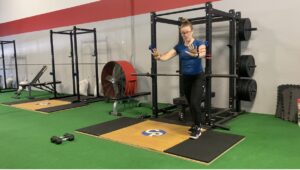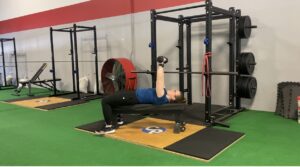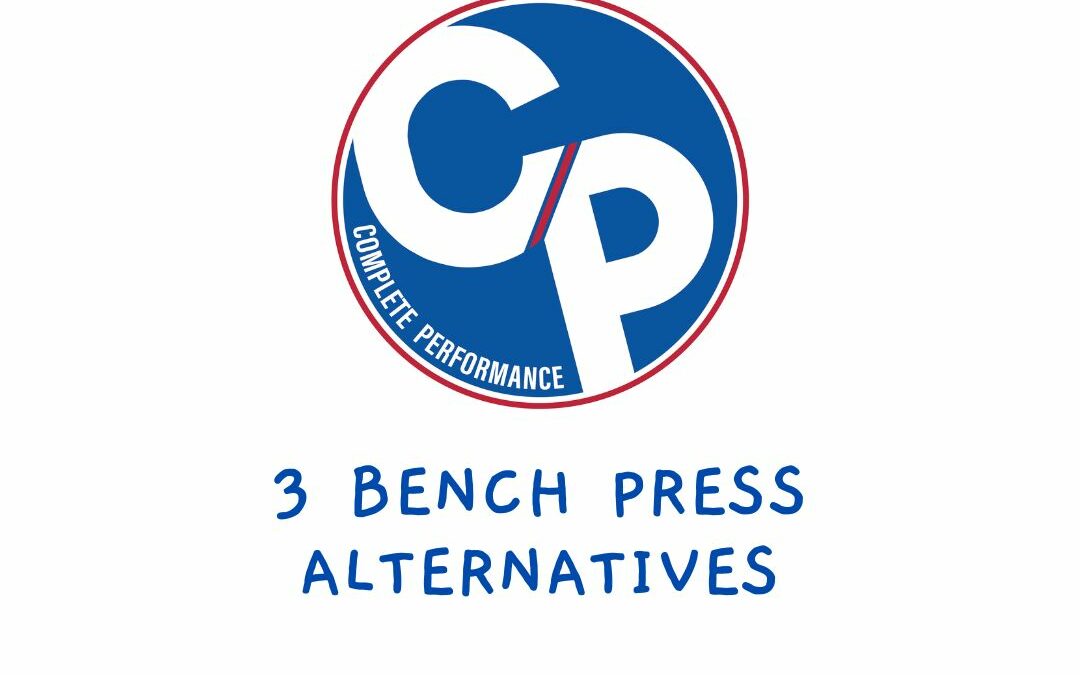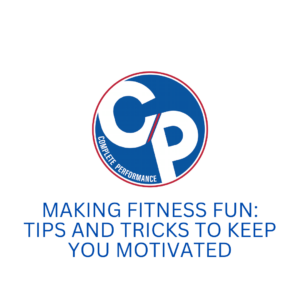Do you bench press?
Better question – should you be using the bench press in your training?
The bench press is one of the most heavily debated exercises.
In athletics, the question becomes should overhead athletes who throw, spike or shoot use this as a modality for training? Or could it lead to shoulder pain?
When it comes to everyday mom’s and dad’s (like you), is this an exercise you really need to get fitter, healthier, and stronger.
Is it really going to help you hold the kids? Pick up items off the floor? Lift things off shelves? Carry in all the groceries?
Then, even those who love bench press have their debates…
What’s the right technique?
Should you have an arch?
Should your feet be flat?
There’s A LOT of controversy with bench press, and that leads to a lot of people feeling uncertain if this is the right exercise for them and if they’re capable of doing it without getting hurt.
That’s why I want to give you 3 exercises that are going to help give you the confidence you need to train the right areas and build up the confidence for a bench press if you’re hoping to include it in your training.
What Is a Bench Press?
The bench press was designed to target the chest, shoulders and arms.
It’s an exercise likely tied back to Greco-Roman times, but is officially documented to have come about in 1899 when George Hackenschmidt performed the first recorded floor press (Physical Culture Study).
Through its many variations, it has become a staple in programs for individuals training to both improve physique and showcase their strength.
The current bench press record was done by equipped lifter, Jimmy Kolb, in 2022 pressing 1,320 pounds (The Sun).
While the bench press can be a great exercise for either strength or physique, it’s not one novice lifters or females are particularly confident or interested in using in their training programs.
Bench Press Alternatives
In choosing alternative exercises, you need something to still target your chest, shoulders and arms.
#1 Band or Cable Press

Band or Cable Press
This is one of my favorite introductory exercises for horizontal pressing movements.
The variation you use (band or cable) is largely going to depend on the equipment you have in your training space.
At Complete Performance, we don’t have a cable machine, so rely on a band press variation.
Most larger chain gyms will have a cable machine and minimal bands, which requires you to resort to the cable variation.
Let’s start with the setup.
It’s important to make sure you set up at the right height.
Too often people set it up too low or too high, which can adversely put your shoulder in a difficult pressing position.
Long-term? That leads to aches and pains in shoulders, elbows and wrists.
Ideally, the anchor is placed at about armpit height or slightly below.
You grab an end in each hand and loop the cable or band over the top of your arms.
(Under the arms DOES also work; however, I personally feel under the arm pulls on my thumbs and causes a bit more difficulty locking the shoulder into position).
Palms are going to be down to the floor.
When it comes to elbow positioning, you want to think you’re shoving a bad guy away from yourself – you need to be in your strongest pushing position.
Elbows too high and you’re asking the smaller muscles of your shoulders to do most of the work.
Elbows too low and you’re not in a position to use your stronger chest and shoulder muscles, so you call on your wrists and elbows.
The goal?
Aim for a 45 degree angle with the elbows from the side.
Now for the motion.
You’re going to start by squeezing those shoulder blades down towards the hips. This locks the shoulder into place and allows you to isolate the chest and shoulder muscles.
Next, you squeeze from the chest to press the hands forward.
It’s important you think about squeezing through the chest here (those are the muscles you’re targeting after-all!).
Just because the motion is titled “Band or Cable PRESS” does not mean that you can forget about the rest of this motion.
Oftentimes, people press out hard and strong, then just allow the hands and arms to return to the starting position quickly and without control.
After you complete the press out, adjust your focus to the back, so you can squeeze through the back as the arms come back in.
Your goal is to press out using the chest and pull back with the back at the same speed.
Now, the last piece we have yet to cover is positioning of the lower body.
When using heavier weights or in isolation of the chest, it’s important to utilize the split stance position. It’s great for stabilization and isolation of the chest and shoulders.
At times, a squared stance is more beneficial.
If you’re hoping to train in more of a full body manner, a squared stance calls for more core engagement.
There are a number of variations to the Band or Cable Press that you can utilize to vary your training. Examples include:
- Bilateral Press (Featured)
- Unilateral Press (Single Arm)
- Tempo Press
- Grip Variations
#2 Push Up

Push Up
Push ups are another excellent beginner upper body exercise.
They often get moaned and groaned at because they’re HARD!
Push ups really are a very humbling exercise to have to push your bodyweight up off the floor.
When it comes to push ups, most people like to go from a Top-Down position.
At Complete Performance, we utilize a Bottom-Up position.
Why?
The Top-Down position doesn’t guarantee you’re in the best position for pushing off the floor.
On the floor, you’re in the most difficult position of a push up.
Starting from the floor guarantees you can set up with the strongest position in the weakest portion of the movement.
Now, for the set up.
First, comes the hand position.
Recently, I saw on Whiteboard Daily that elbows are to be set up in an arrow position instead of a T position.
Most people naturally set up really wide with their hands and shoulders to make a T with the upper body. While you might still be able to push up in this position, you’re placing a lot of strain on the shoulders, elbows and wrists.
For proper positioning, tuck the elbows closer to the sides at a 45 degree angle.
Let’s talk about the push off the floor.
Right before pressing up, pull the shoulder blades down towards your back pockets to lock the shoulders in position for stabilization.
The last piece of advice when it comes to push ups relates to your lower half.
While this IS an upper body exercise, neglecting the lower body can make the exercise A LOT harder.
Before every press up, squeeze the glutes (butt cheeks) and core to engage the lower half.
It’s recommended you reset between each rep to guarantee best positioning and targeting of the appropriate muscle groups.
Like the band or cable press, there are a number of variations including:
- Hand/Arm Position
- Body Positioning (Incline or Decline)
But I want to give special attention to push up modifications when a full body push up is too difficult.
#1 Knee Push Ups – The only difference is that you’re pushing up to your hands and knees instead of your hands and toes. Be sure to maintain full hip extension!
#2 Incline Push Ups – The difference here lies in that your hands are inclined while your feet remain on the floor. You can set up a box, bench, barbell, stair or wall.
As a coach, the Incline Push Up is my preferred method for push up modification at Complete Performance because of the similarities in positioning as a full push up. It allows you to build strength in the core and upper back, which are often key weak points preventing individuals from completing full push ups.
#3 DB Bench Press

DB Bench Press
The DB Bench is an excellent precursor to the barbell bench press because it teaches the technique and builds strength in the movement.
Instead of a barbell, you set up on a bench with a dumbbell in each hand.
While lying on the bench, you pull the dumbbells down towards the chest, then squeeze the chest to press back up.
Similar to the Band or Cable Press, it’s important to think about the “up” and “down” of the motion. While lying down, you need to think about squeezing through the back while pulling the dumbbells down and squeezing through the chest to press back up.
If you want to know some of the most common mistakes associated with the DB Bench Press, CLICK HERE to watch!
Let’s talk about the basic setup.
Keep the feet flat on the floor for stability.
As you pull the dumbbells down, angle the elbows to 45 degrees (just like the Band/Cable Press and Push Up) to spare the shoulders, elbows and wrists of aches and pains.
As with the other 2 alternatives, there are plenty of variations with examples such as:
- Bilateral (Shown)
- Unilateral (Single Arm)
- Alternating DB Bench Press
- Grip Variations
- Tempo Variations
There are truly plenty of variations to incorporate into your training without ever using a barbell.
Upper body pressing motions are great for building day-to-day strength and confidence and should absolutely be included in training!
Looking for more guidance on incorporating these exercises into your training programs?
CLICK HERE for more information on our upper body training programs.
Oh, and don’t forget to check out the full video with demonstrations on YOUTUBE!




